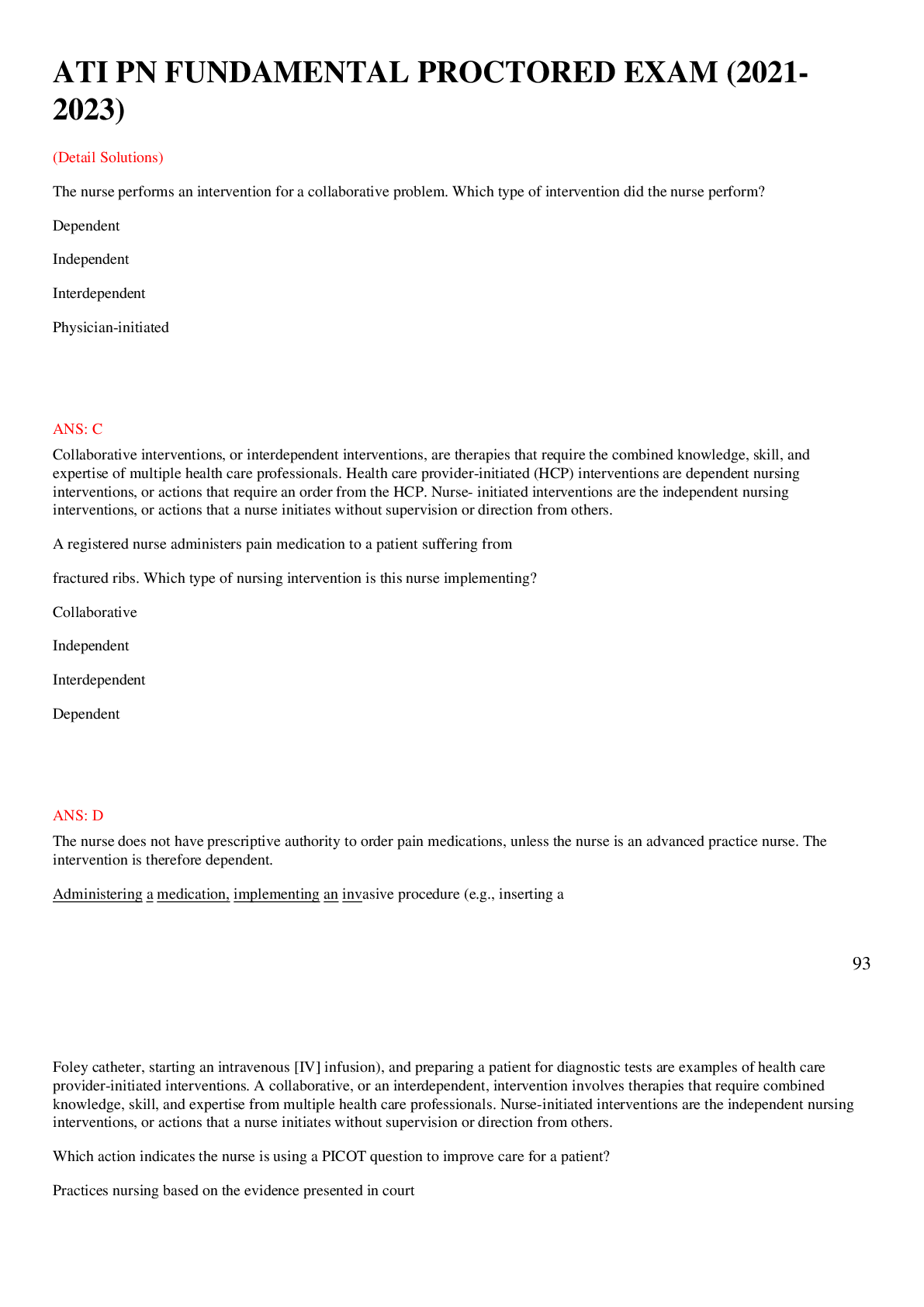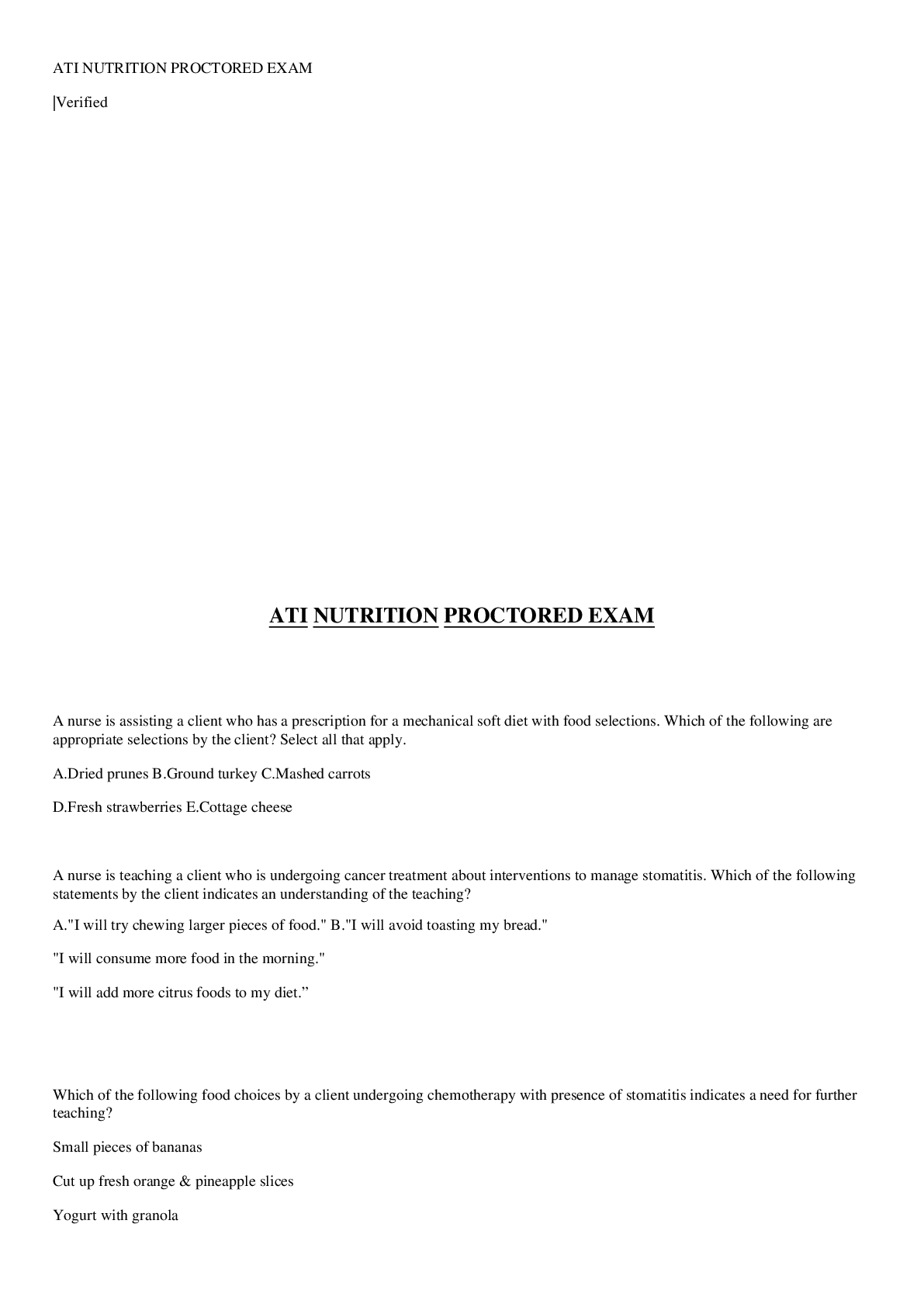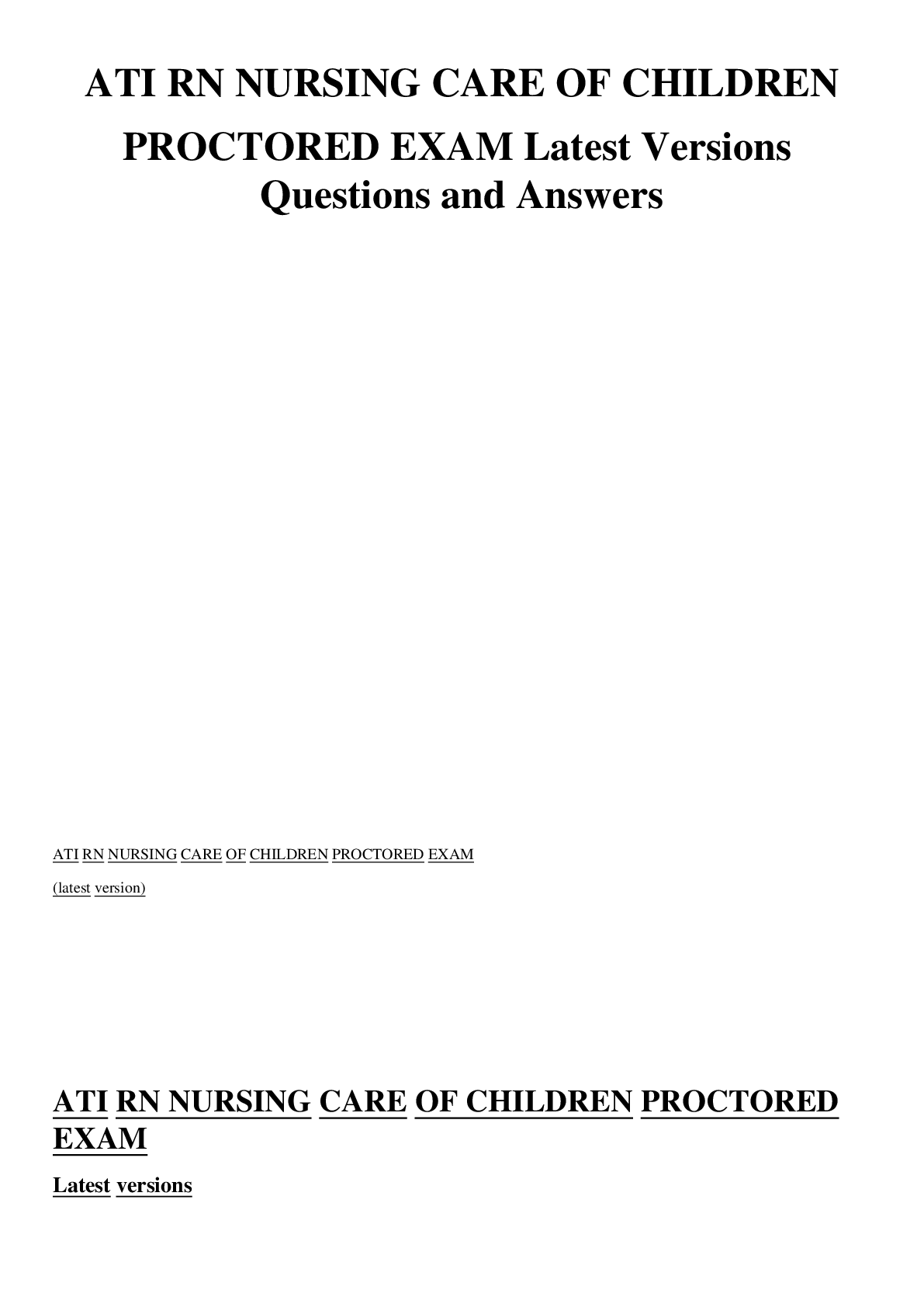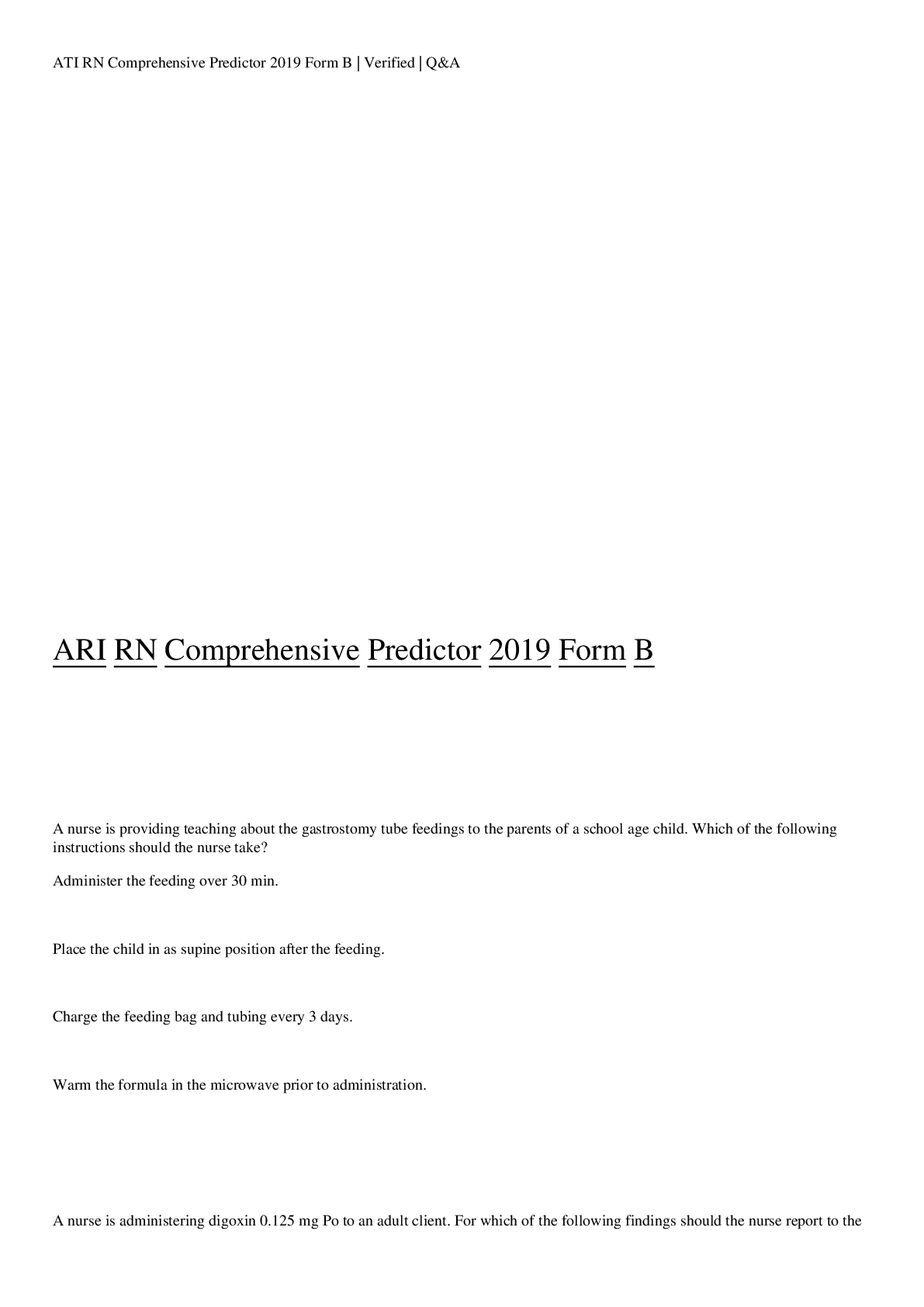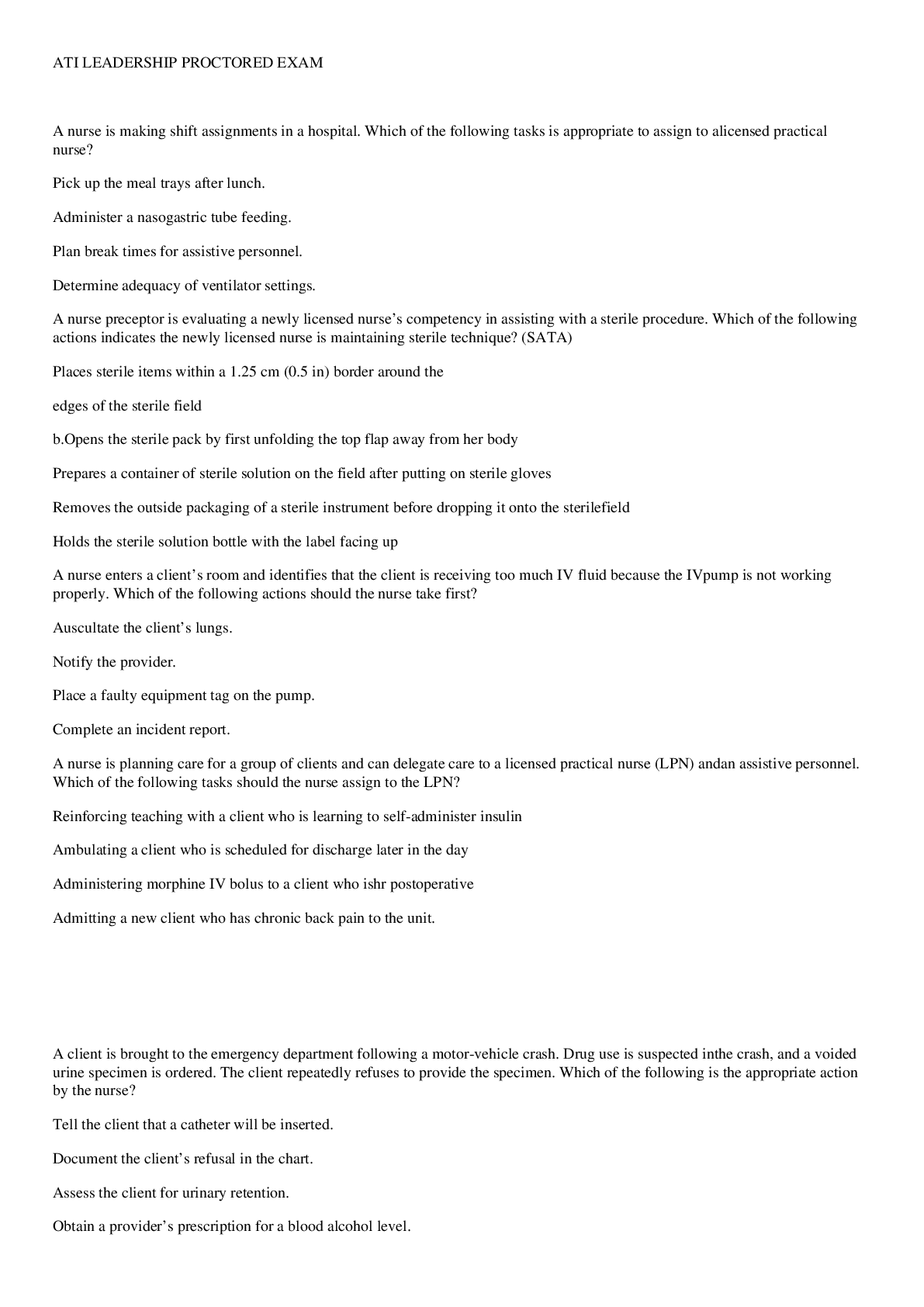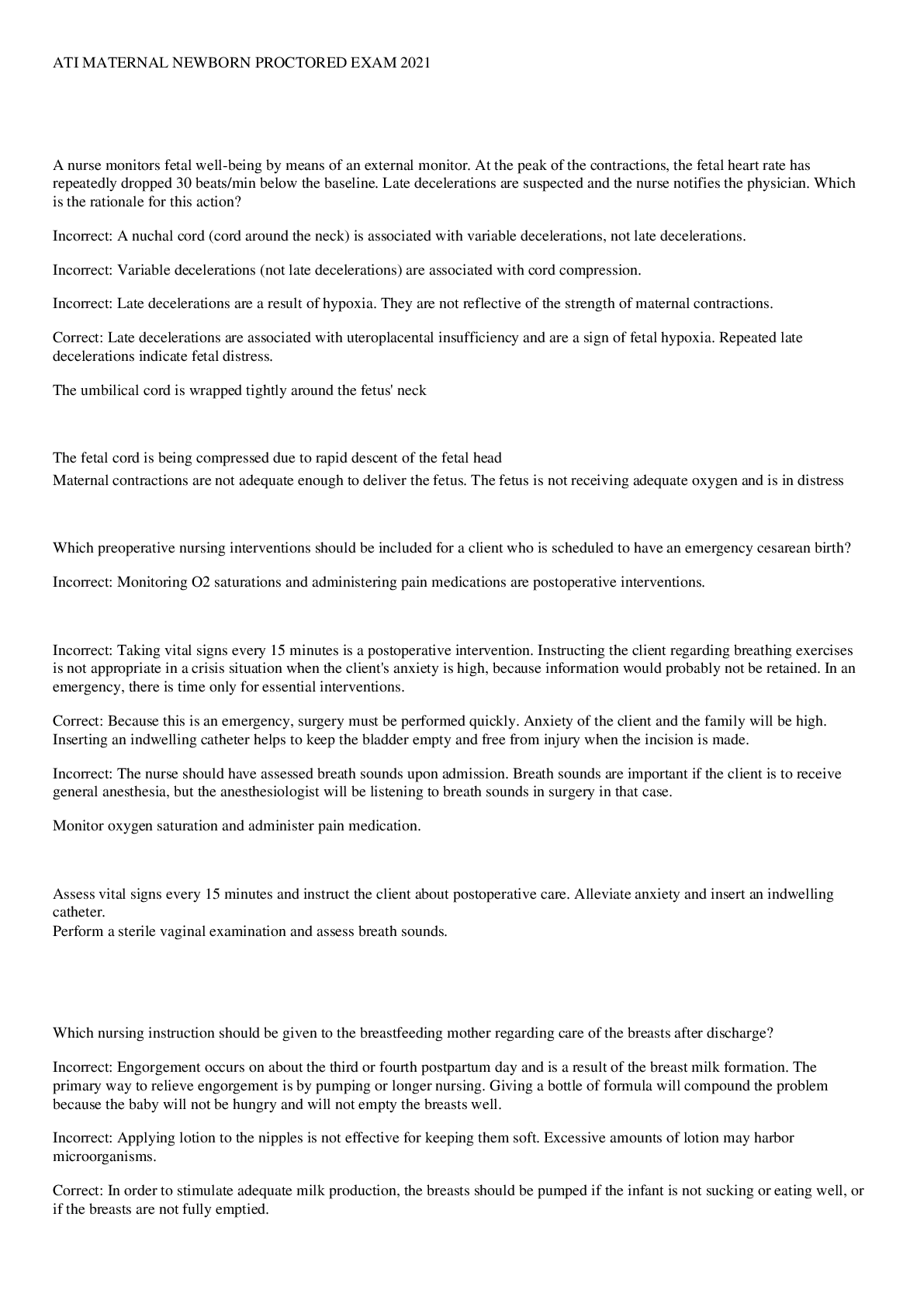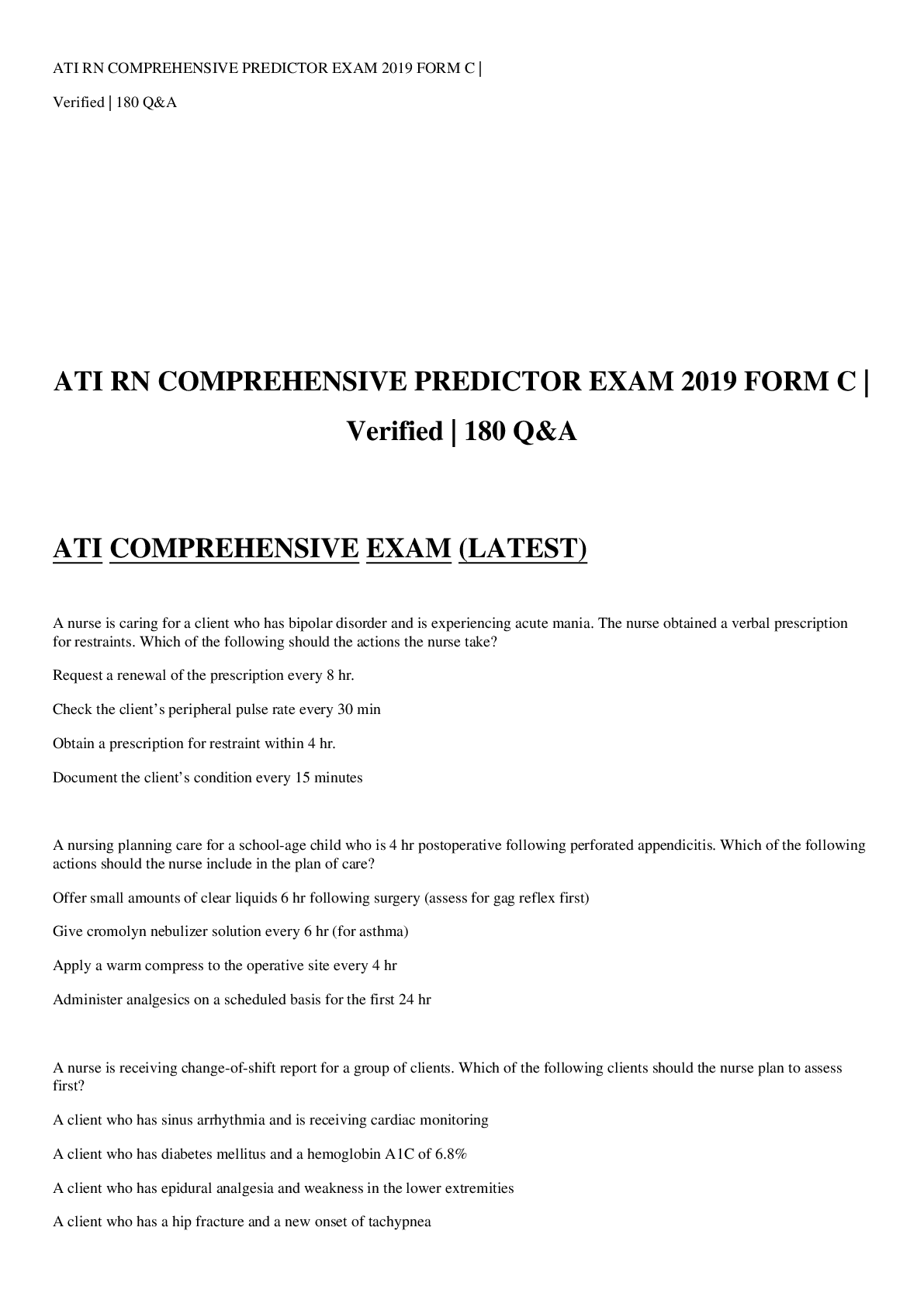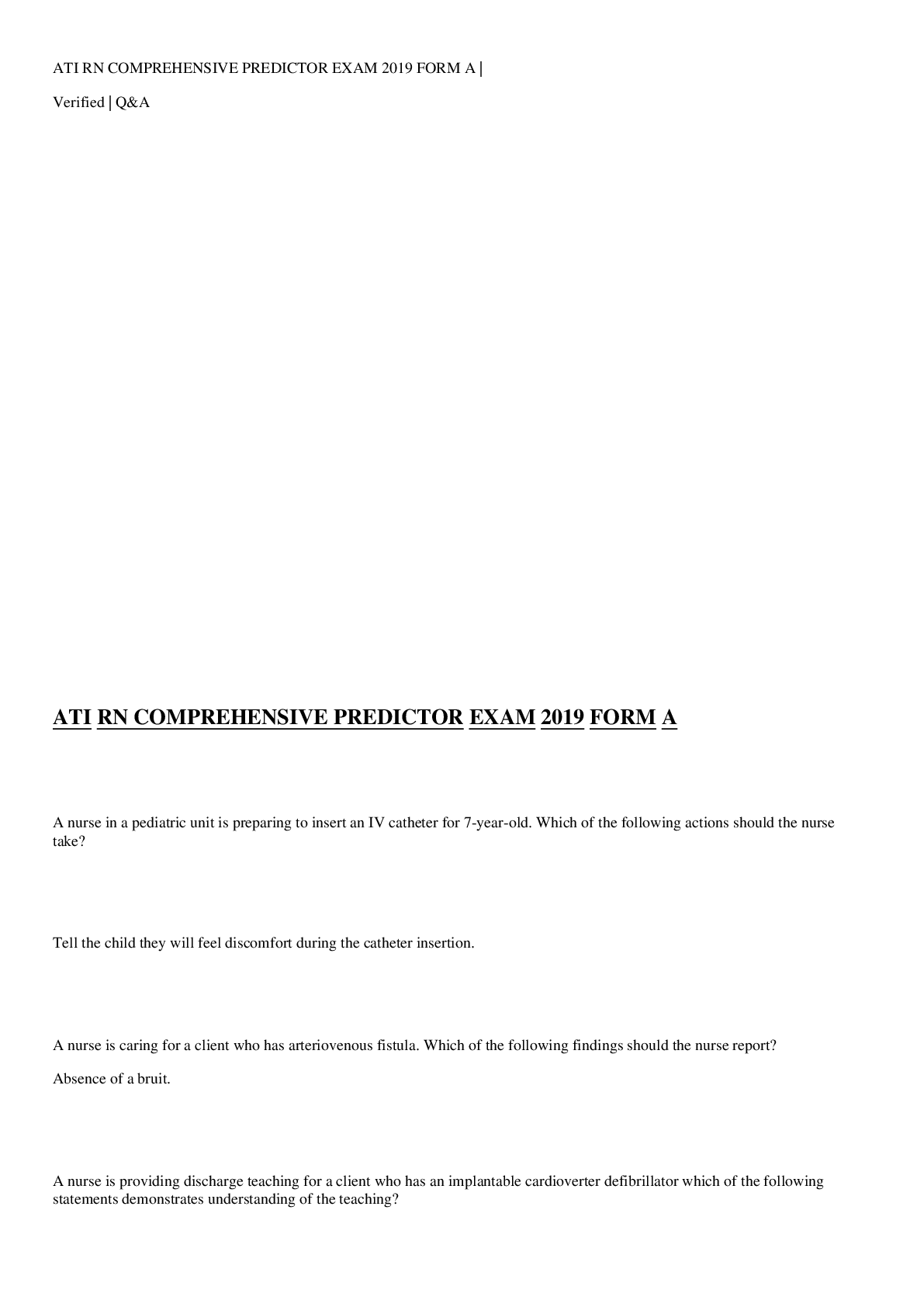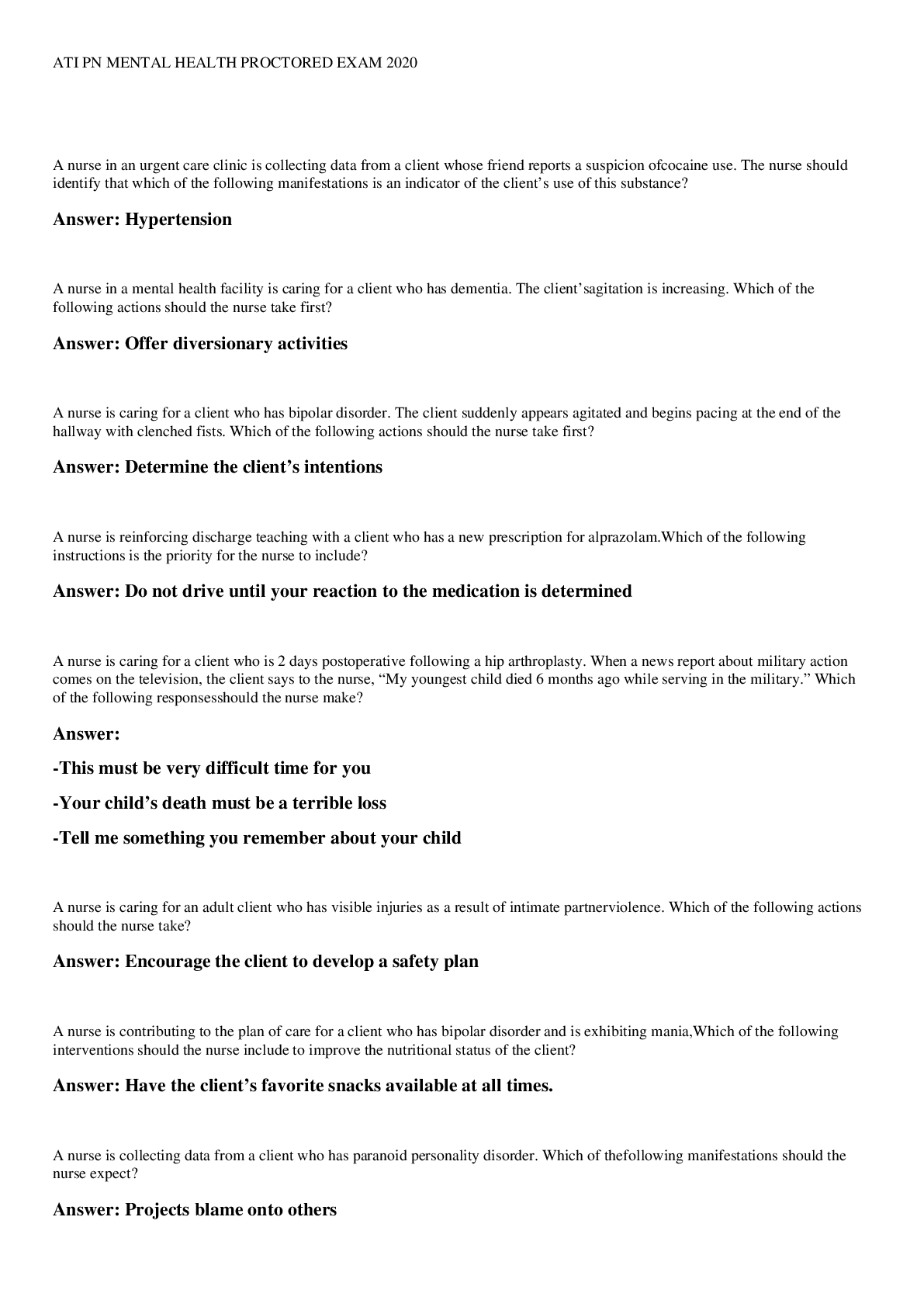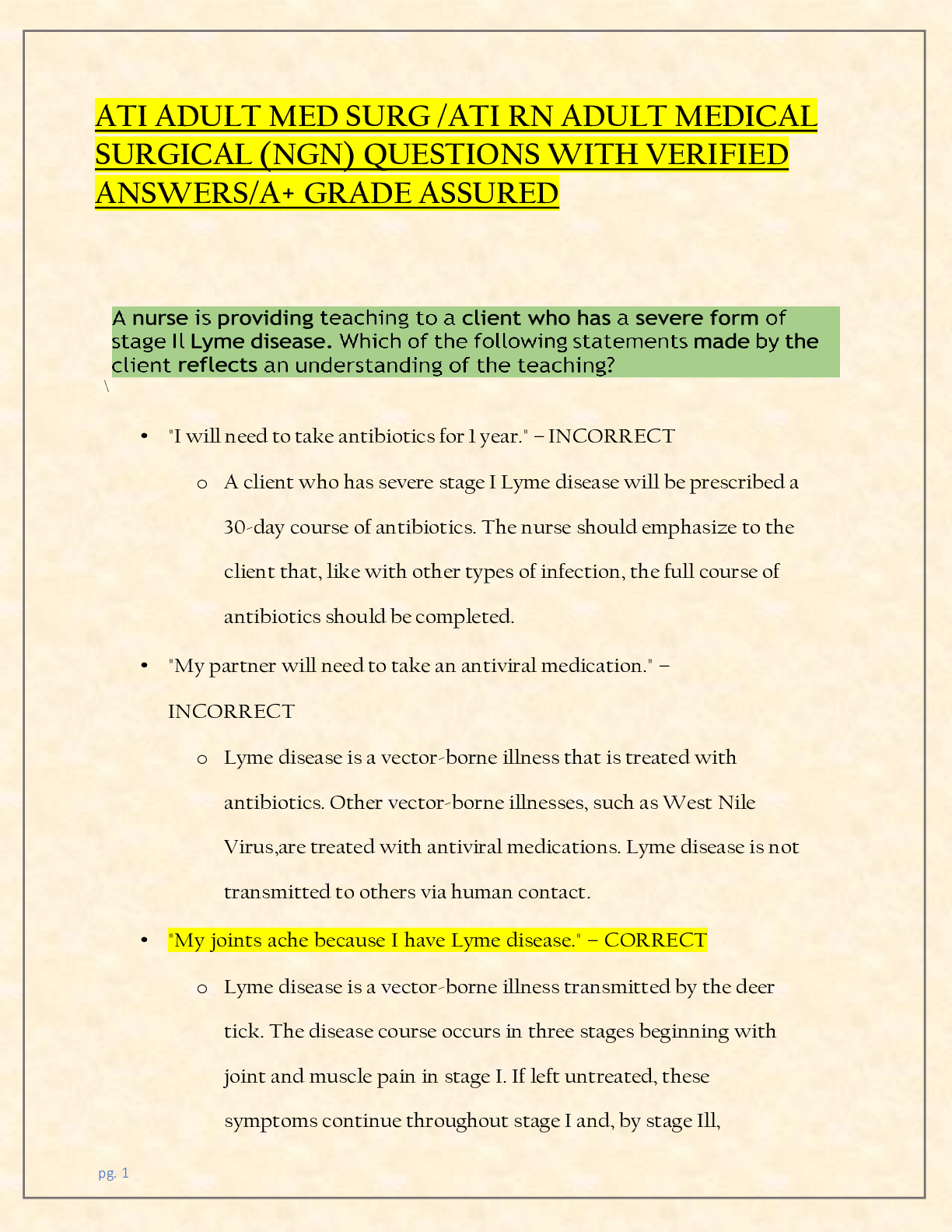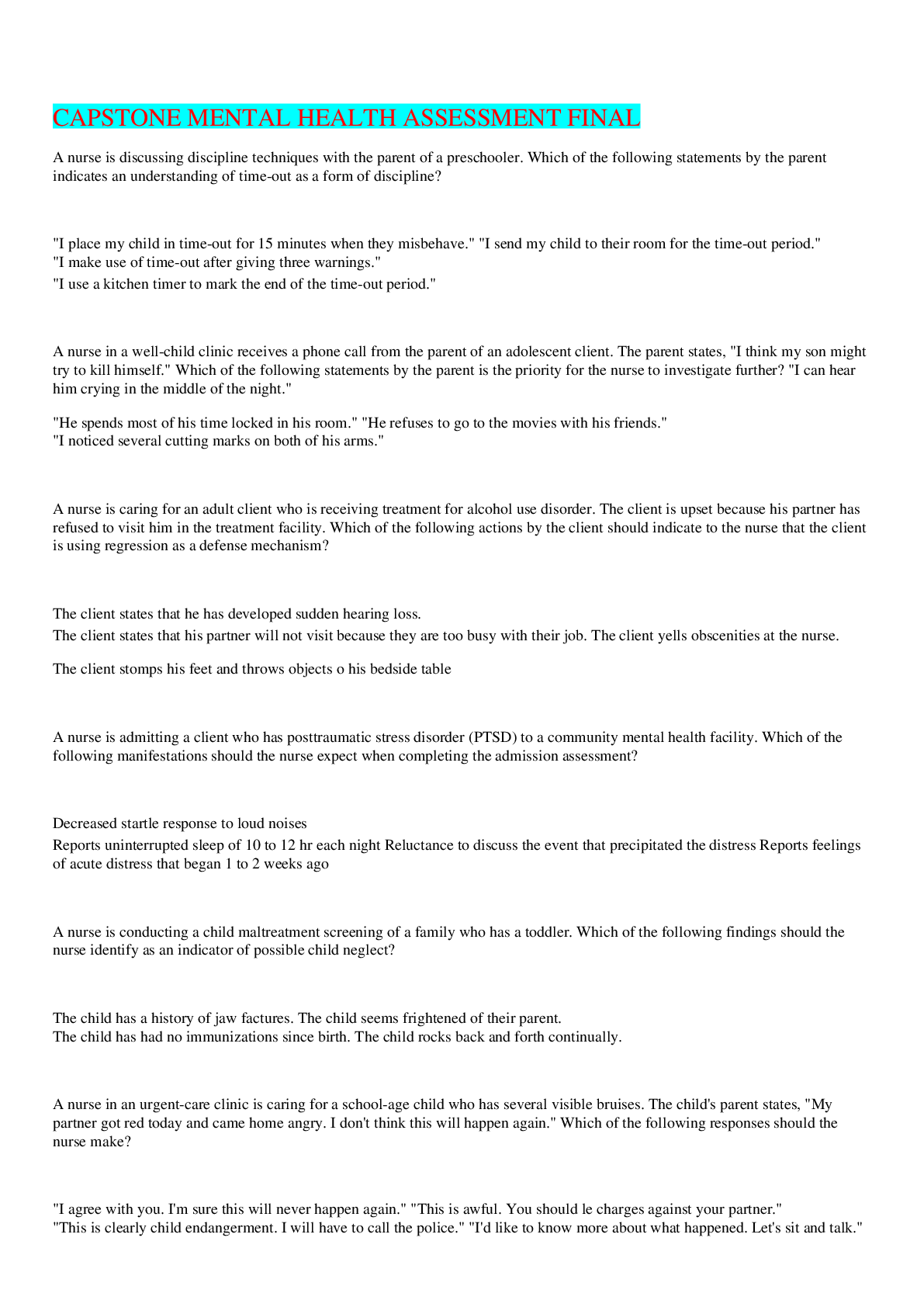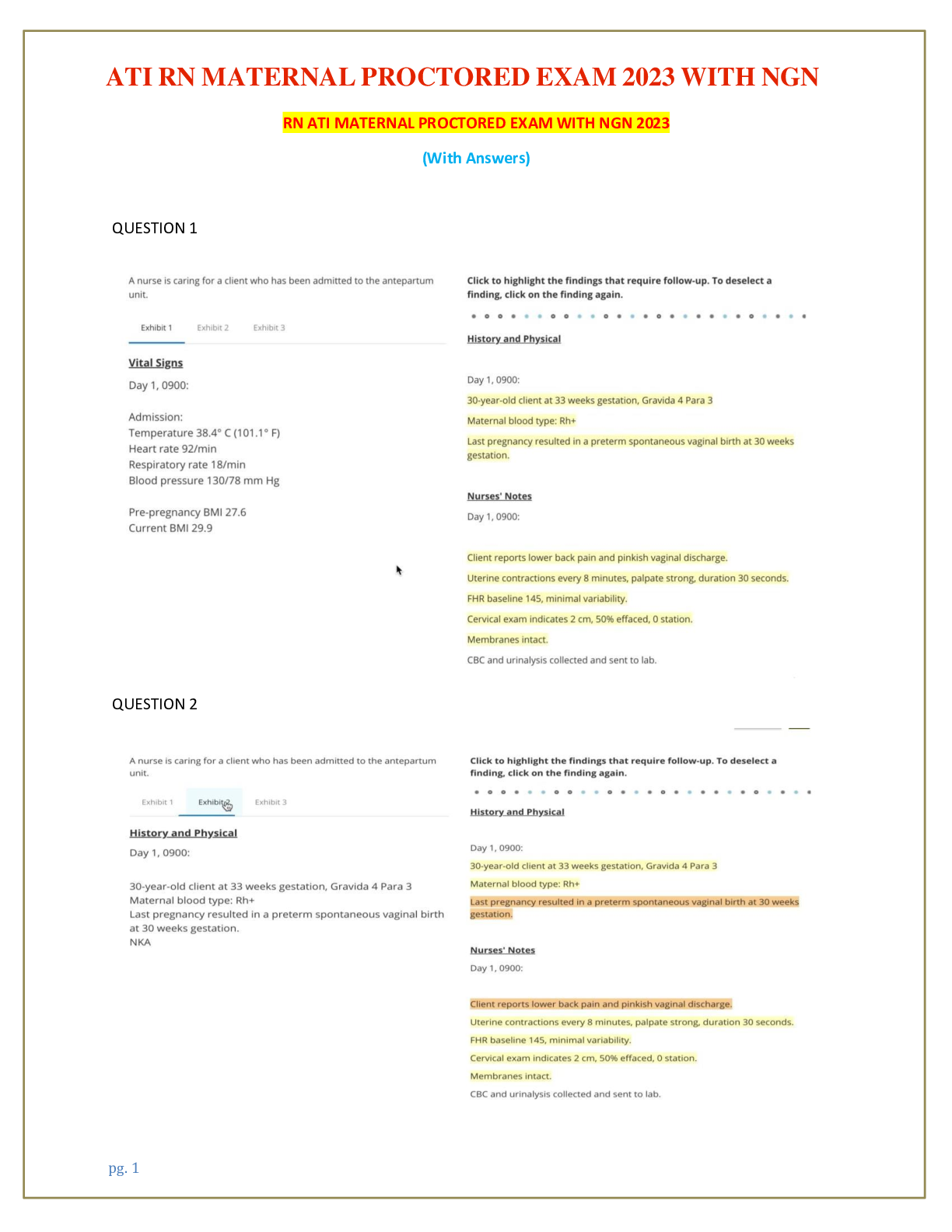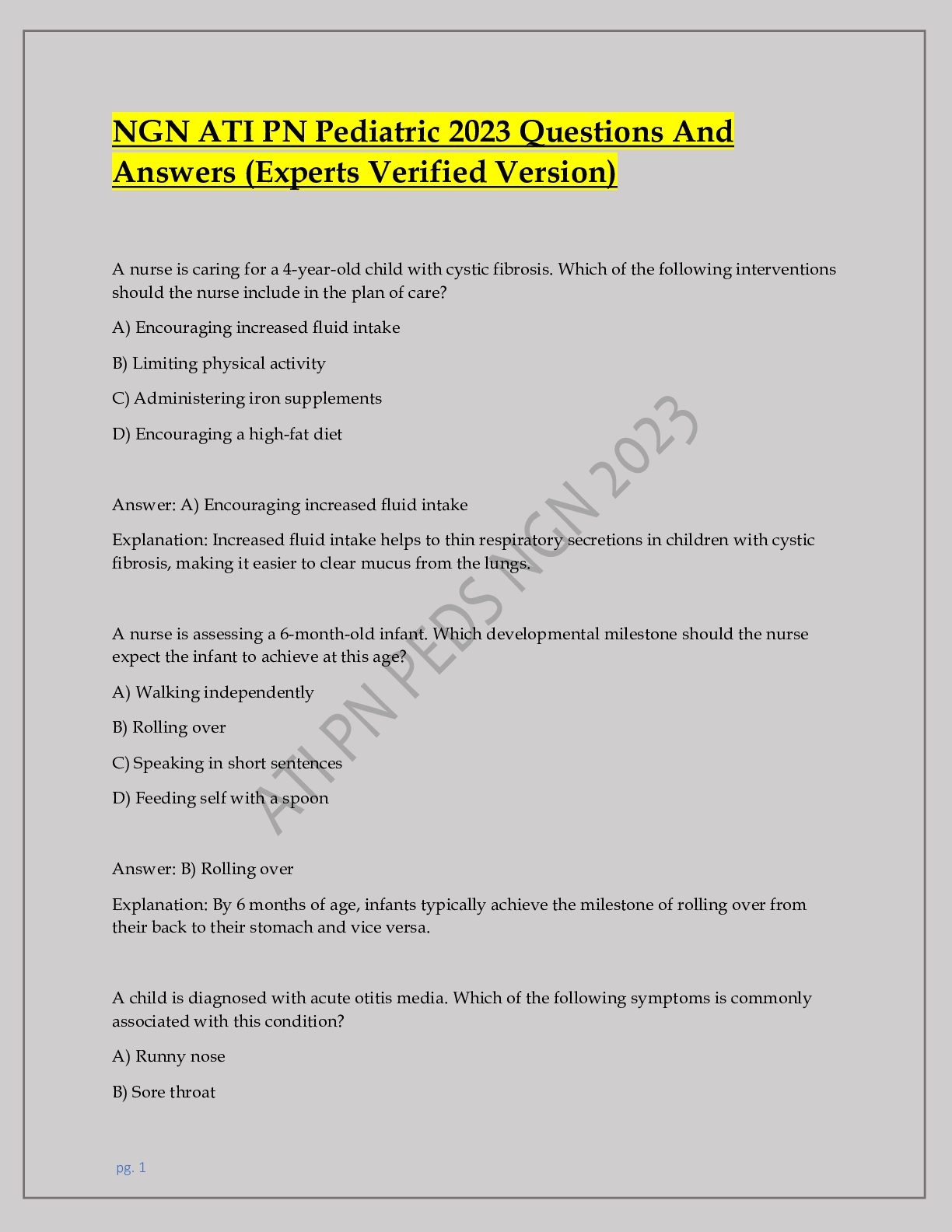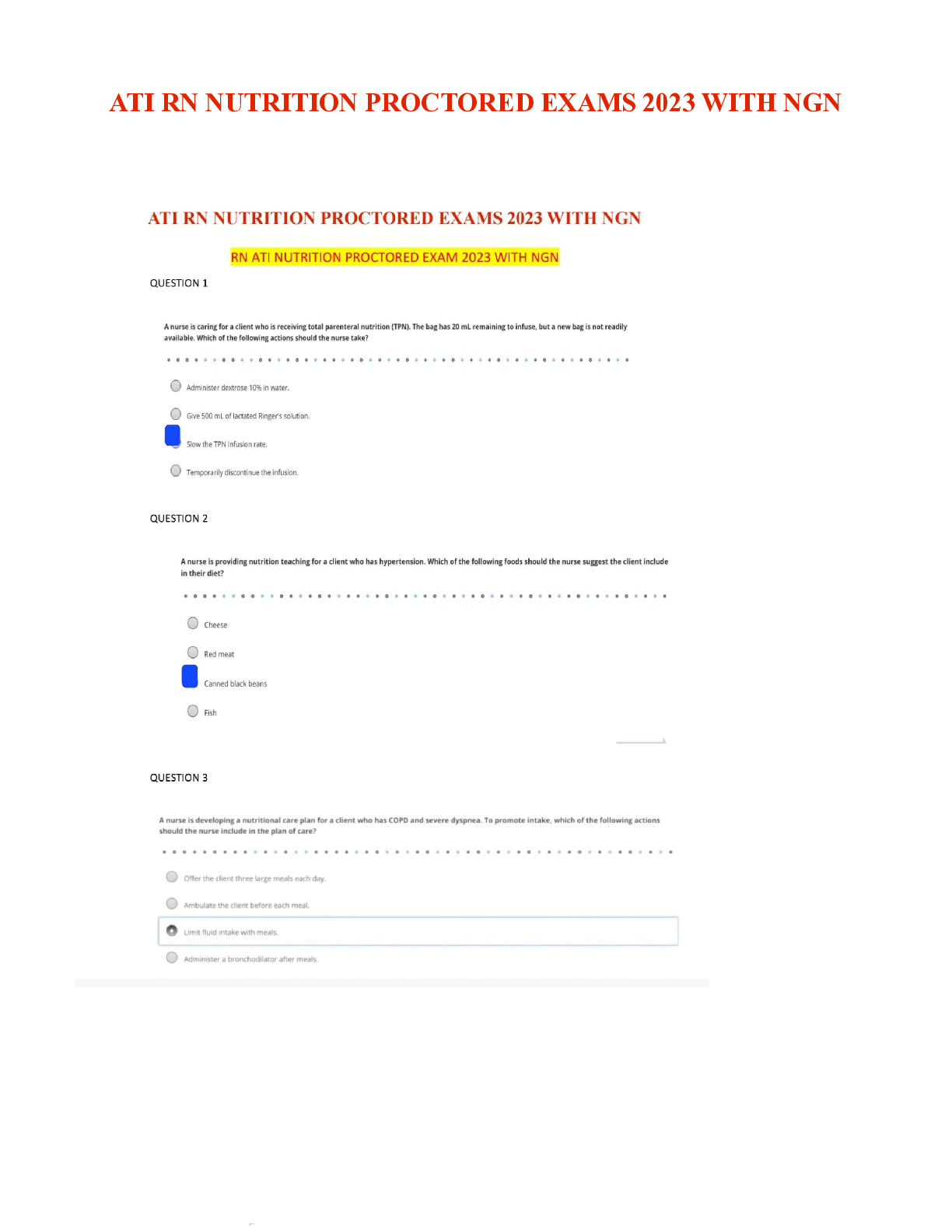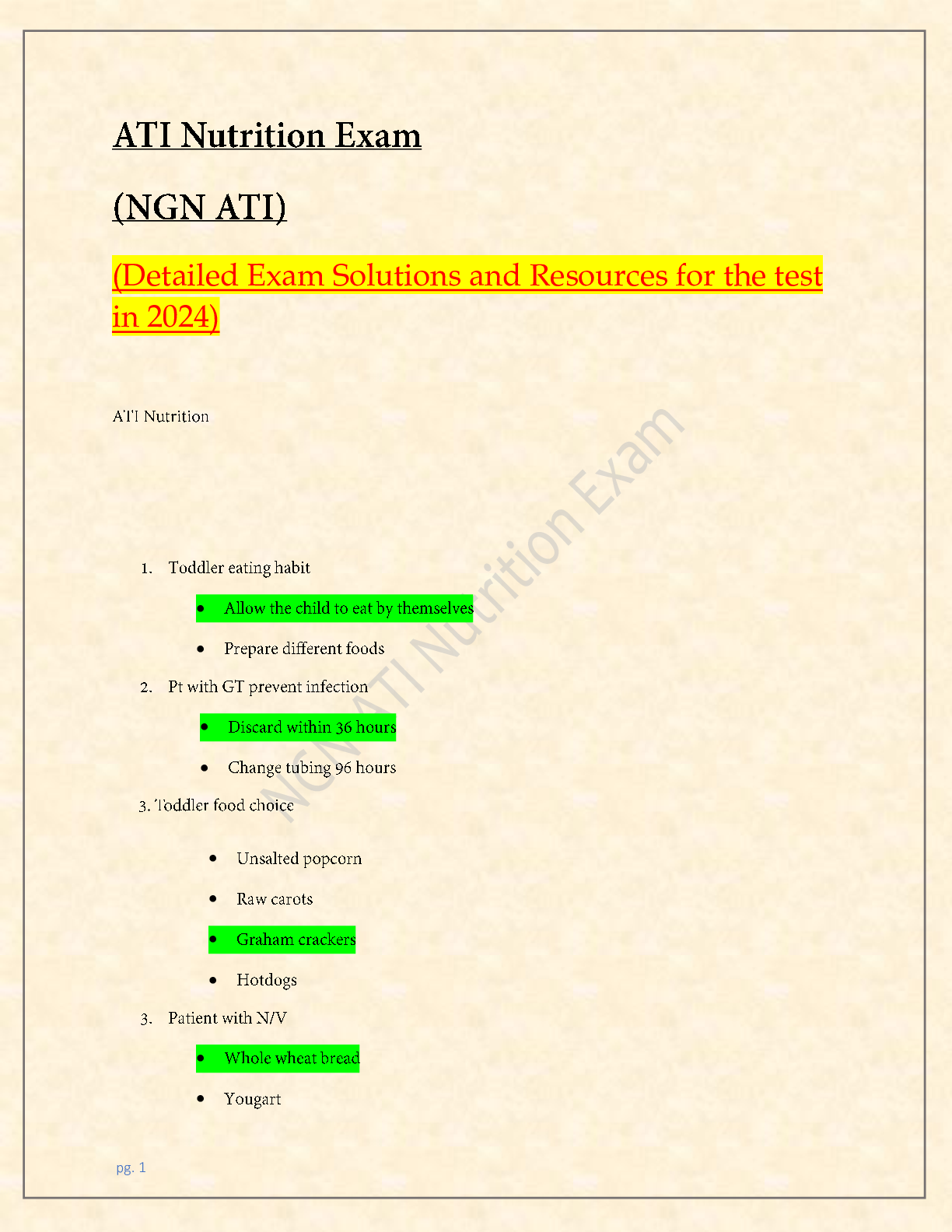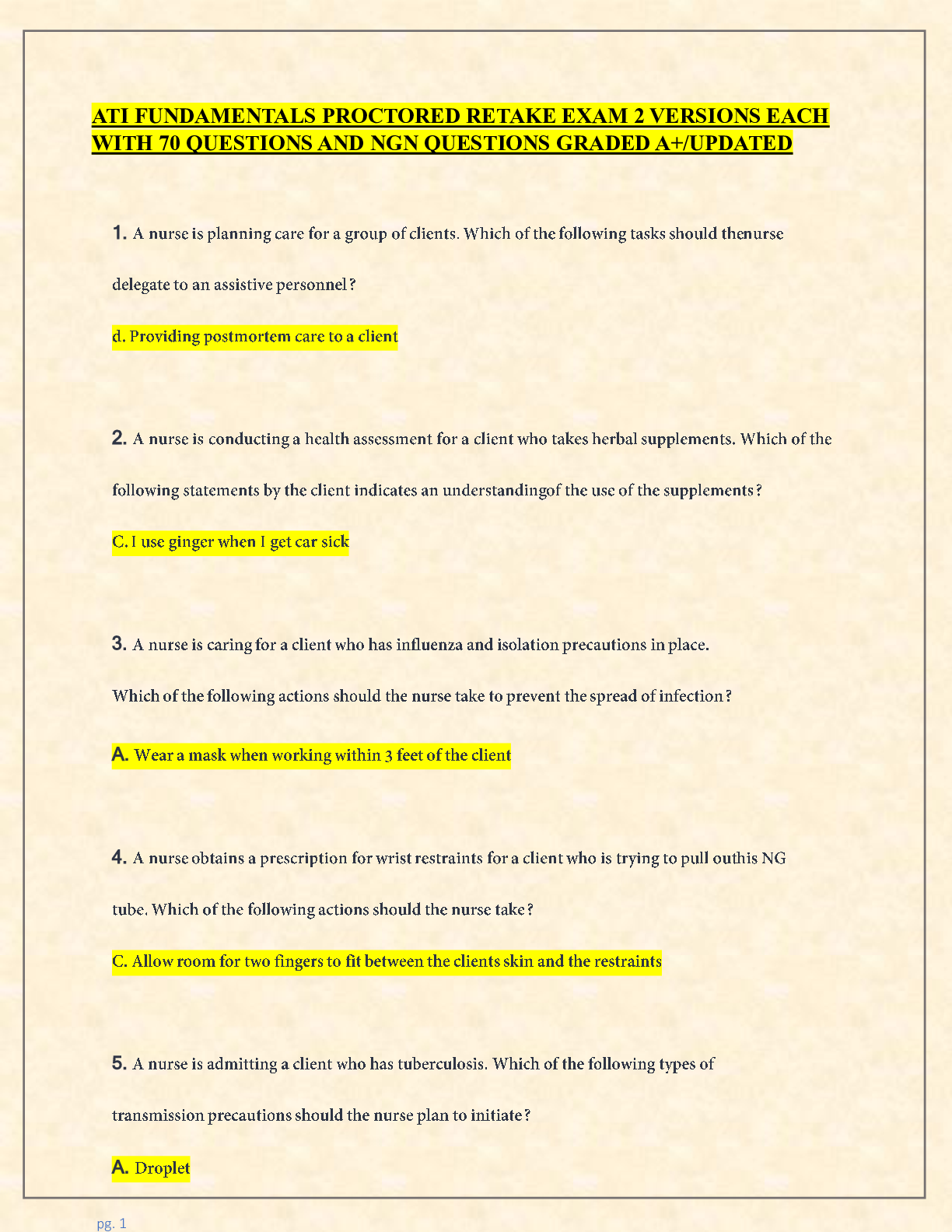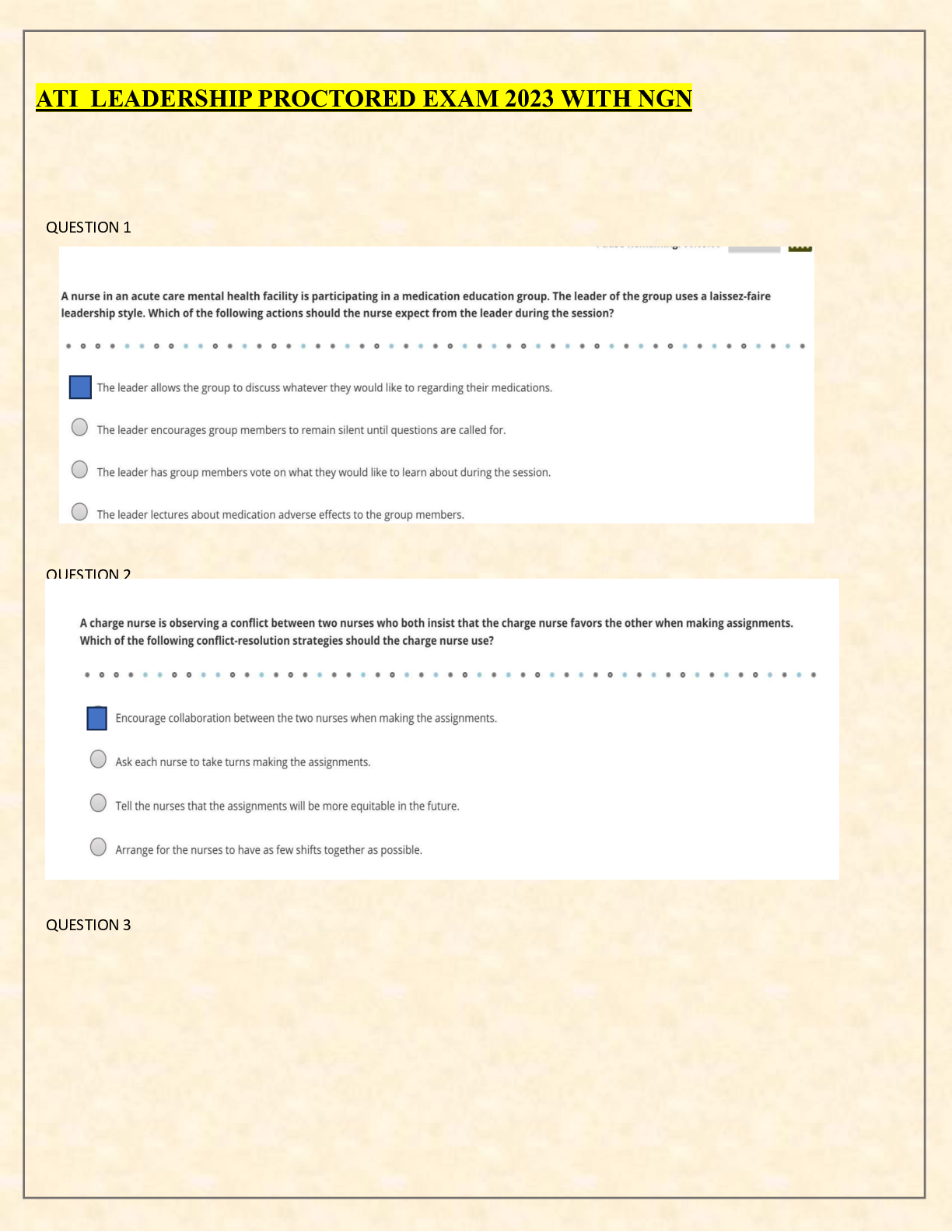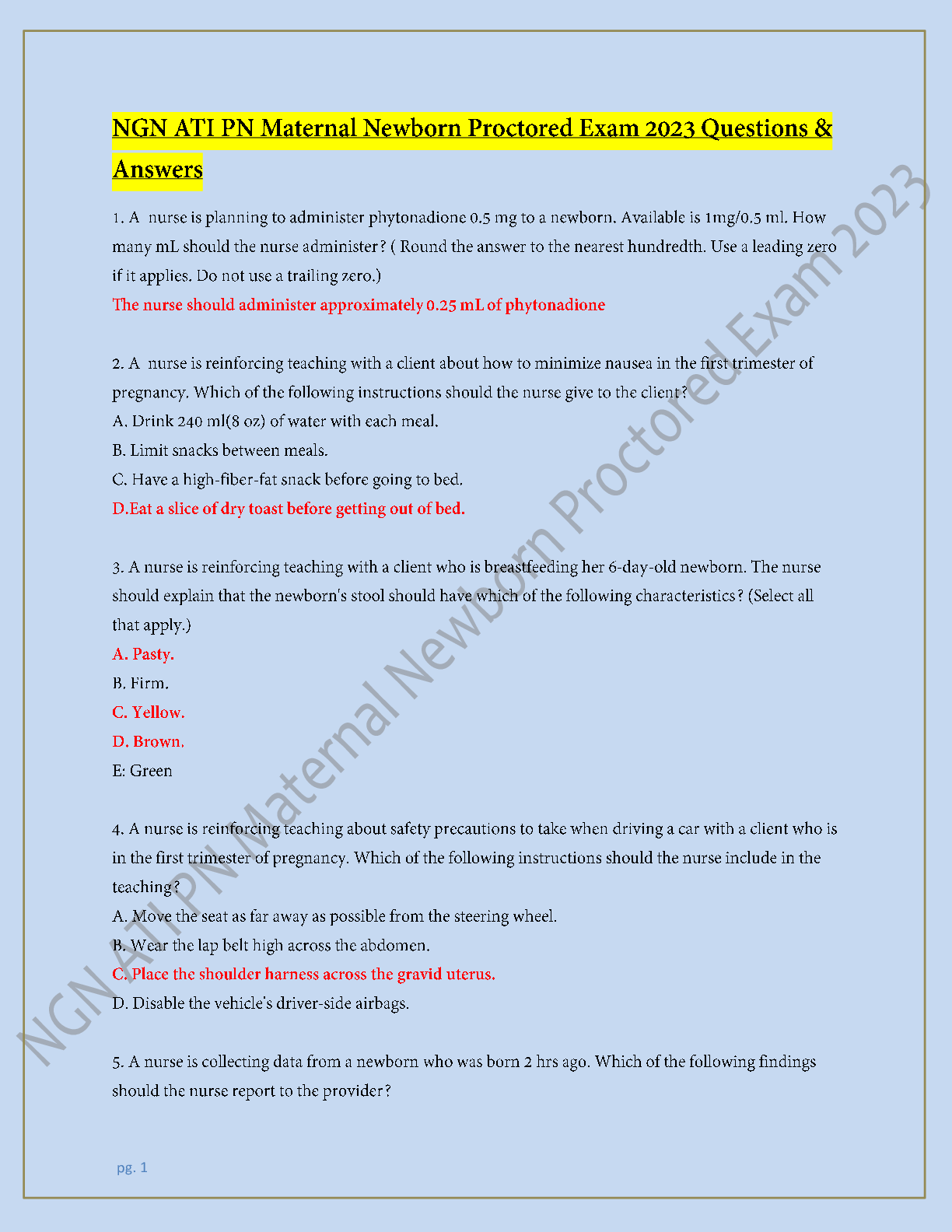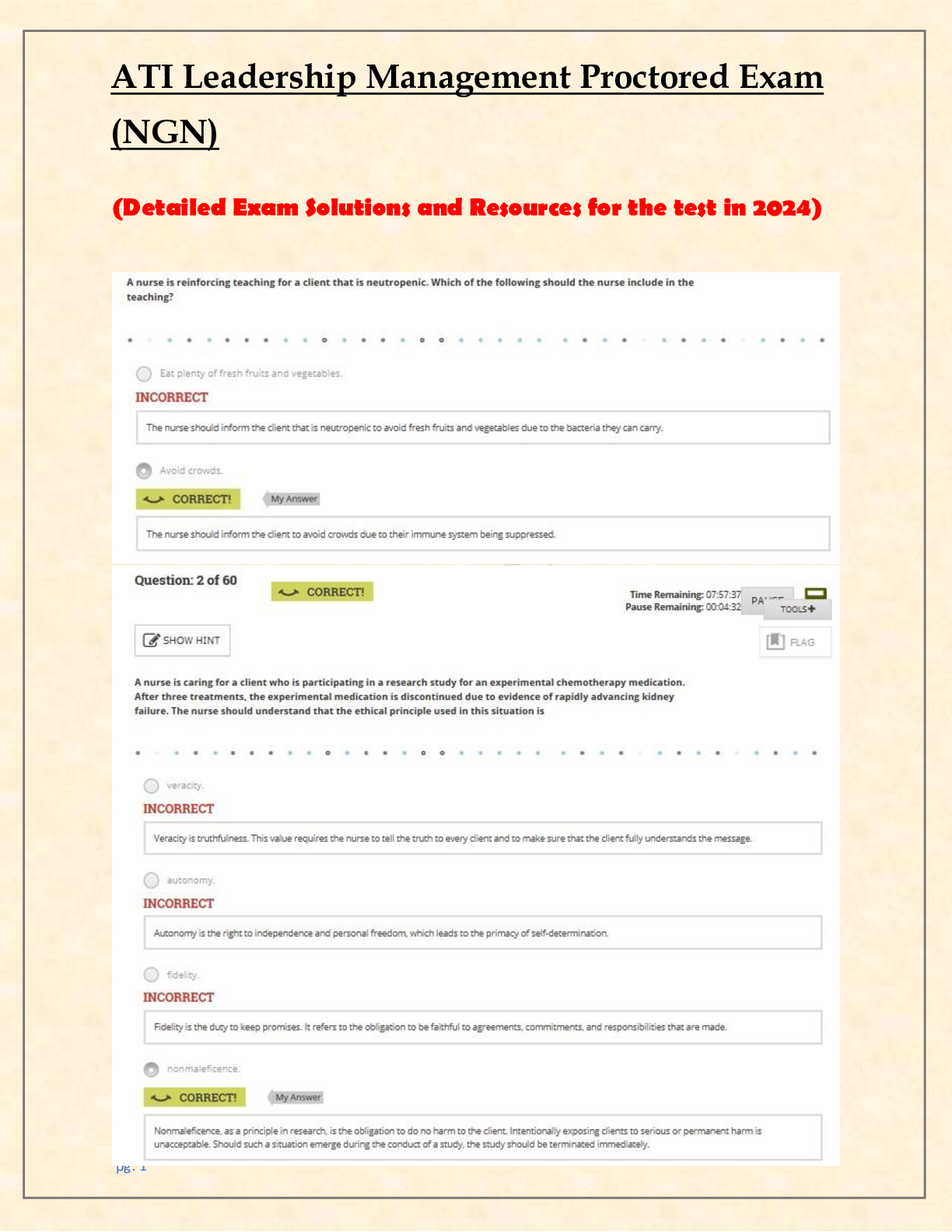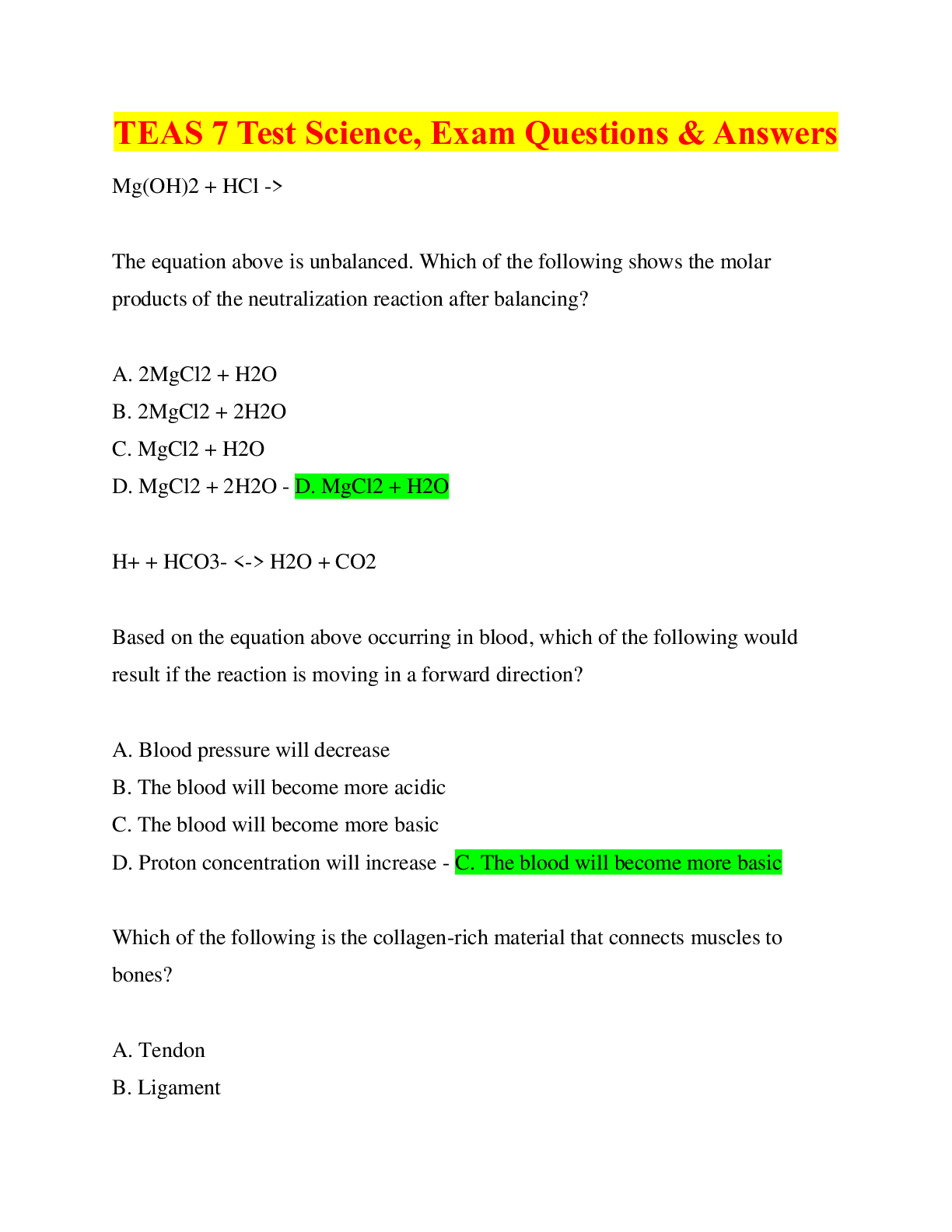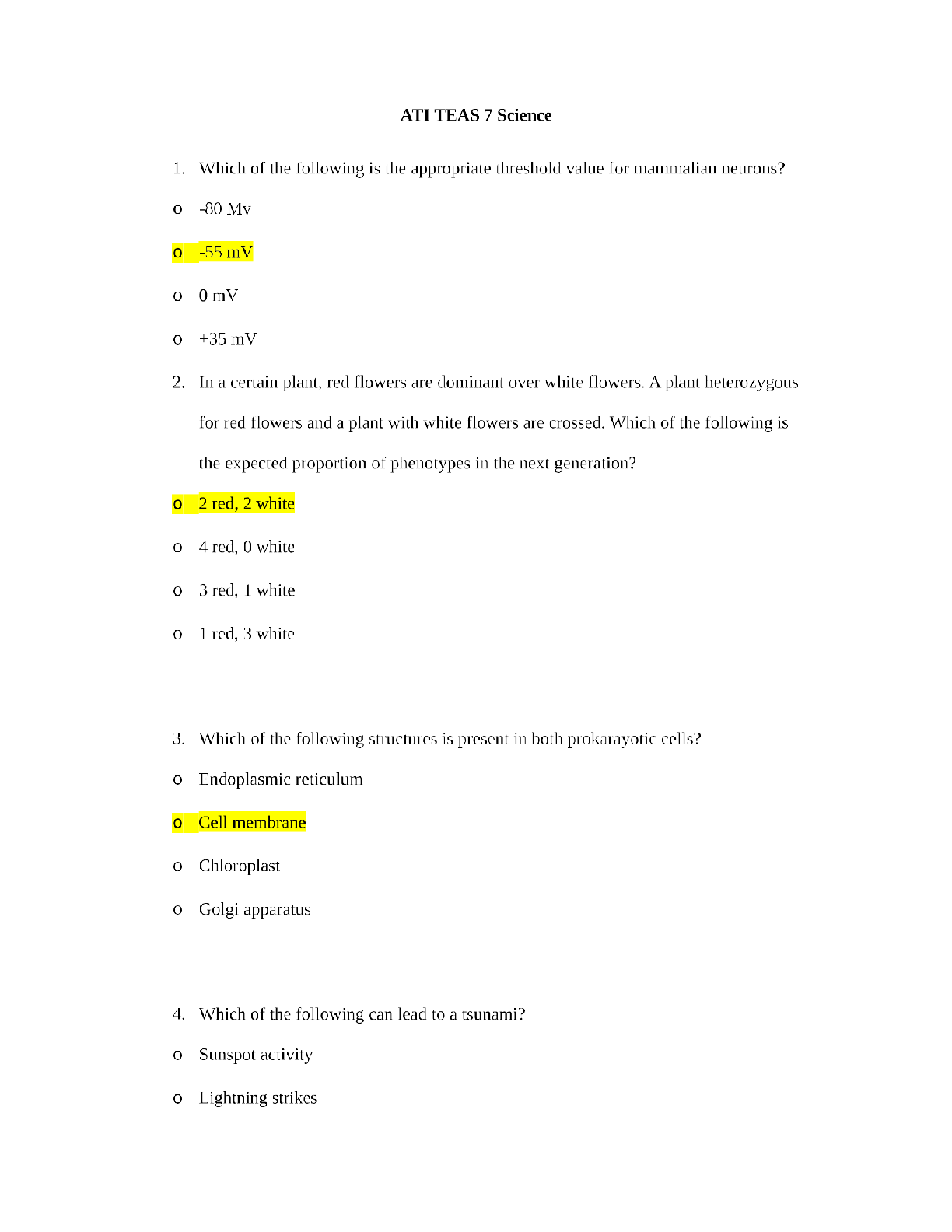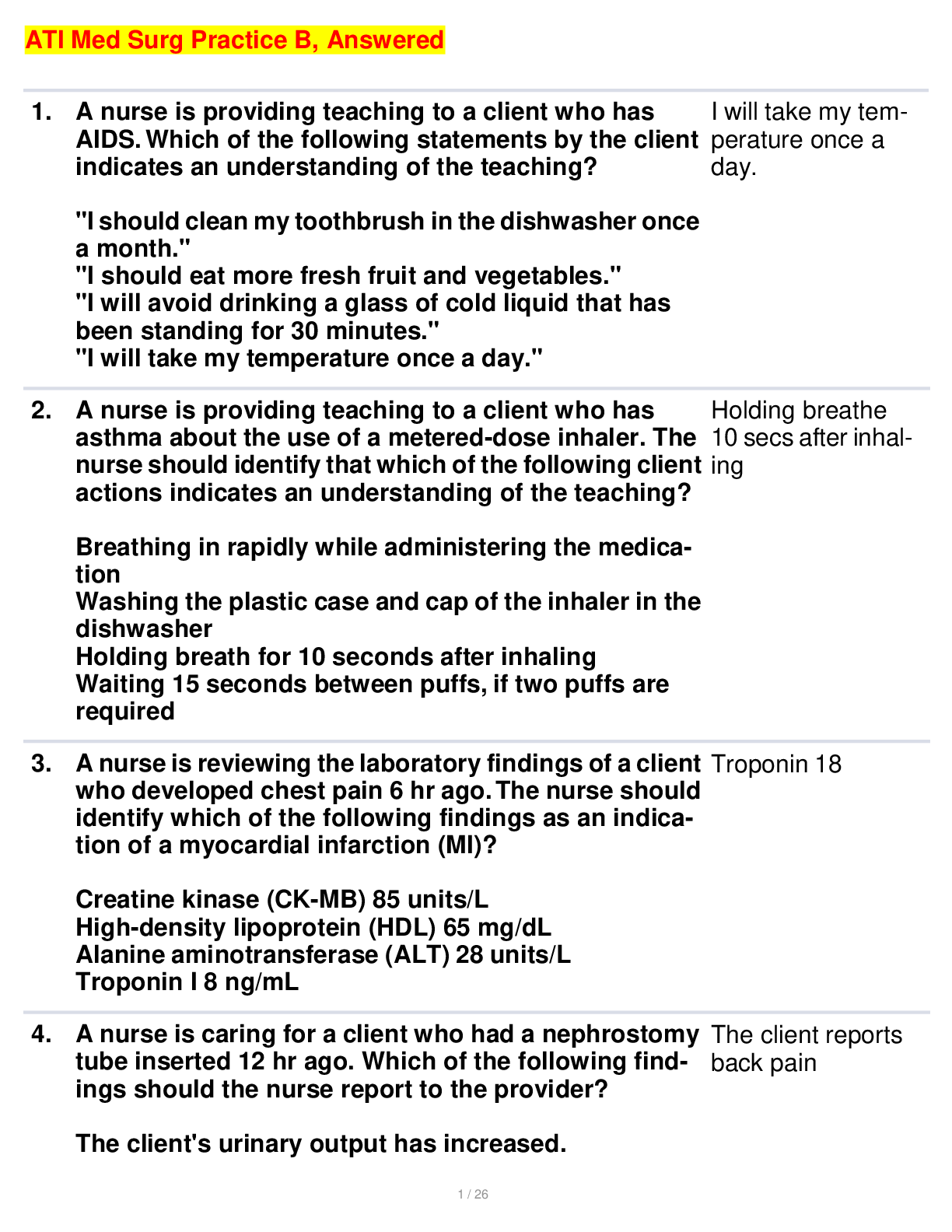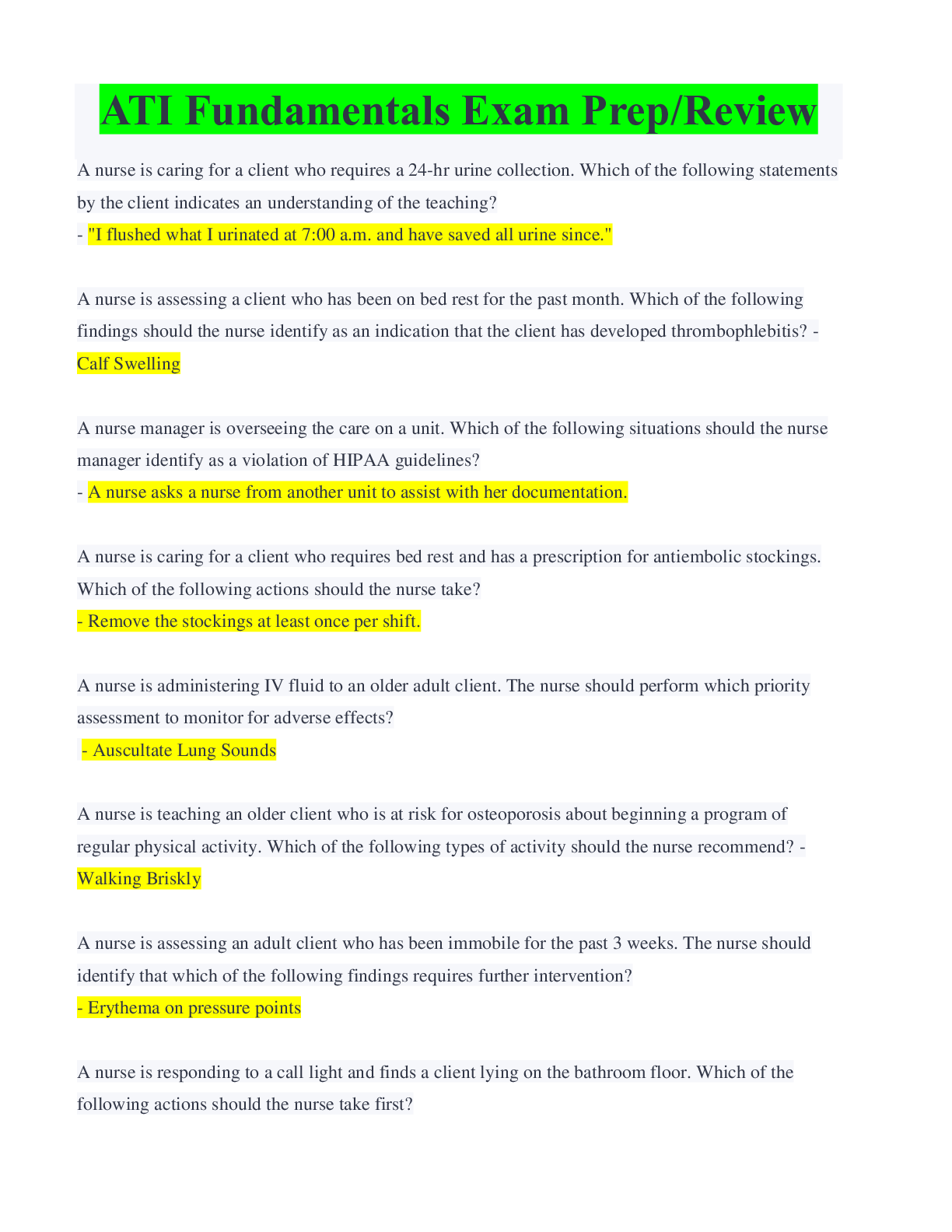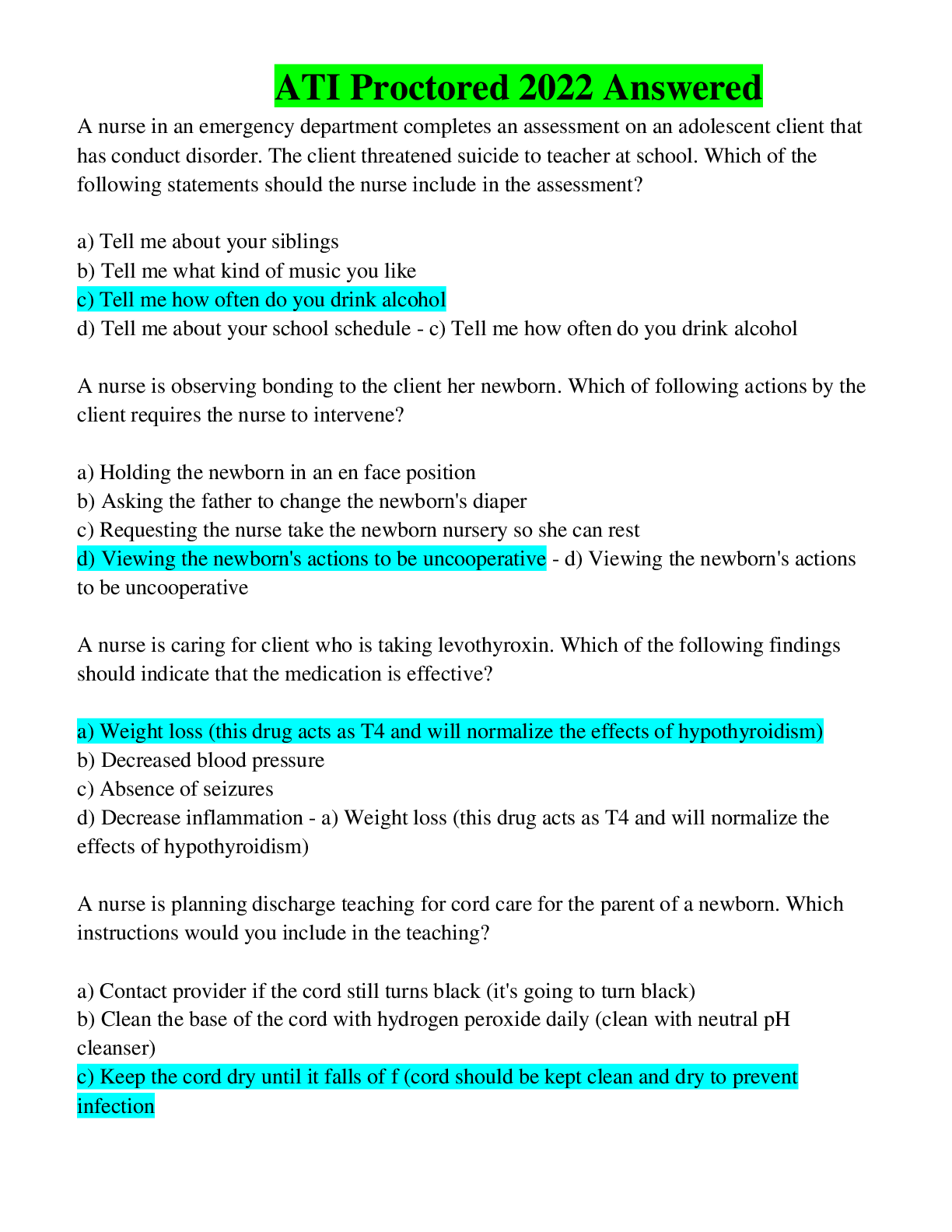Health Care > ATI > ATI PN CAPSTONE EXAM (2019 – 2021) (All)
ATI PN CAPSTONE EXAM (2019 – 2021)
Document Content and Description Below
ATI PN CAPSTONE EXAM (2019 – 2021) 1. If a male client experienced a cerebrovascular accident (CVA) that damaged the hypothalamus, the nurse anticipate that the client has problems with: a. Bod... y temperature control. b. Balance and equilibrium c. Visual acuity d. Thinking and reasoning 2. A female client admitted to an acute care facility after a car accident develops signs andsymptoms of increased intracranial pressure (ICP). The client is intubated and placed on mechanical ventilation to help reduce ICP. To prevent a further rise in ICP caused bysuctioning, the nurse anticipates administering which drug endotracheal before suctioning? a. Phenytoin (Dilantin) b. Mannitol (Osmitrol) c. Lidocaine (Xylocaine) d. Furosemide (Lasix) 3. After striking his head on a tree while falling from a ladder, a young man age 18 isadmitted to the emergency department. He’s unconscious and his pupils are nonreactive. Which intervention would be the most dangerous for the client? a. Give him a barbiturate b. Place him a mechanical ventilation c. Perform a lumbar puncture d. Elevate the head of his bed 4. When obtaining the health history from a male client with retinal detachment, the nurse expects the client to report: a. Light flashed and floaters in front of the eye b. A recent driving accident while changing lanes c. Headaches, nausea, and redness of the eyes d. Frequent episodes of double vision 5. Which nursing diagnosis takes highest priority for a client with Parkinson’s crisis? a. Imbalanced nutrition: less than body requirements b. Ineffective airway clearance c. Impaired urinary elimination d. Risk for injury 6. To encourage adequate nutritional intake for a female client with Alzheimer’s disease, the nurse should: a. Stay with the client and encourage him to eat b. Help the client fill out his menu c. Give the client privacy during meals d. Fill out the menu for the client 7. The nurse is performing a mental status examination on a male client diagnosed with subdural hematoma. This test assesses which of the following? a. Cerebellar function b. Intellectual function c. Cerebral function d. Sensory function 8. Shortly after admission to an acute care facility, a male client with a seizure disorderdevelop status epilepticus. The physician orders diazepam (Valium) 10 mg I.V. stat.How soon can the nurse administer a second dose of diazepam, if needed and prescribed? a. In 30 to 45 seconds b. In 10 to 15 minutes c. In 30 to 45 minutes d. In 1 to 2 hours 9. A female complains of periorbital aching, tearing, blurred vision, and photophobia in her right eye. Ophthalmologic examination reveals a small, irregular, nonreactive pupil - a condition resulting from acute iris inflammation (iritis). As part of the client’s therapeutic regimen, the physician prescribes atropine sulfate (Atropisol), two drops of0.5% solution in the right eye twice daily. Atropine Sulfate belongs to which drug classification? a. Para sympathomimetic agent b. Sympatholytic agent c. Adrenergic blocker d. Cholinergic blocker 10. Emergency medical technicians transport a 27-year-old iron worker to the emergency department. They tell the nurse, “He fell from a two story building. He has a large contusion on his left chest and a hematoma on the left parietal area. He has a compoundfracture of his left femur and he’s oximeter with a manual-resuscitation bag.” Which intervention by the nurse has the highest priority? a. Assessing the left leg b. Assessing the pupils c. Placing the client in Trendelenburg’s position d. Assessing level of consciousness 11. An auto mechanic accidentally has battery acid splashed in his eyes. His coworkers irrigate his eyes with water for 20 minutes, and then take him to emergency departmentof a nearby hospital, where he received emergency care for corneal injury. The physician prescribes dexamethasone (Maxidex Ophthalmic Suspension), two drops of 0.1% solution to be instilled initially into the conjunctival sacs of both eyes every hour;and polymycin B sulfate (Neosporin Ophthalmic), 0.5% ointment to be places in the conjunctival sacs of both eyes every 3 hours. Dexamethasone exerts its therapeutic effect by: a. Increasing the exudative reaction of ocular tissue b. Decreasing leukocyte infiltration at the site of ocular inflammation c. Inhibiting the action of carbonic anhydrase d. Producing a miotic reaction by stimulation and contraction the sphincter muscles of the iris. [Show More]
Last updated: 1 year ago
Preview 1 out of 41 pages
Instant download

Instant download
Reviews( 0 )
Document information
Connected school, study & course
About the document
Uploaded On
Jul 12, 2022
Number of pages
41
Written in
Additional information
This document has been written for:
Uploaded
Jul 12, 2022
Downloads
0
Views
52

